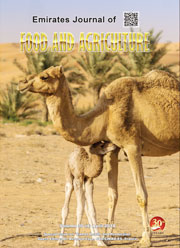Characteristics of Azotobacter sp. strain AC11 and their effects on the growth of tomato seedlings under salt stress
DOI:
https://doi.org/10.9755/ejfa.2019.v31.i7.1978Keywords:
Azotobacter sp. strain AC11; Plant growth promotion; Tomato; Salt stress; Antioxidant enzymeAbstract
This study was aimed to investigate the potential of Azotobacter sp. strain AC11 in promoting growth and enhancing resistance to salinity stress in tomato seedlings. In this study, we measured the ability of strain AC11 to fix nitrogen and solubilize phosphorus and potassium, as well as its production of indole-3-acetic acid (IAA) and siderophores. A greenhouse pot experiment was conducted to investigate whether strain AC11 promoted tomato seedlings’ growth and enhanced their salt resistance. The results showed that strain AC11 produced IAA and siderophores, fixed nitrogen, and solubilized potassium and phosphorus. In pot trials, strain AC11 increased the shoot height, root length, and dry and fresh weights of tomato seedlings, and also increased their chlorophyll, soluble protein, and soluble sugar content. Furthermore, the bacteria induced the activities of superoxide dismutase (SOD; EC: 1.15.1.1), peroxidase (POD; EC: 1.11.1.7), and catalase (CAT; EC: 1.11.1.6), while it reduced the malondialdehyde (MDA) content and rate of O2- generation in tomato seedlings under salt stress. In summary, Azotobacter sp. strain AC11 promoted the growth of tomato seedlings and induced resistance to salt stress by producing IAA and siderophores, promoting the activities of antioxidant enzymes, and increasing the content of osmotic adjustment substances as well as enhancing the availability of the macronutrients N, P, K, and Fe3+ in the soil.










 .
. 